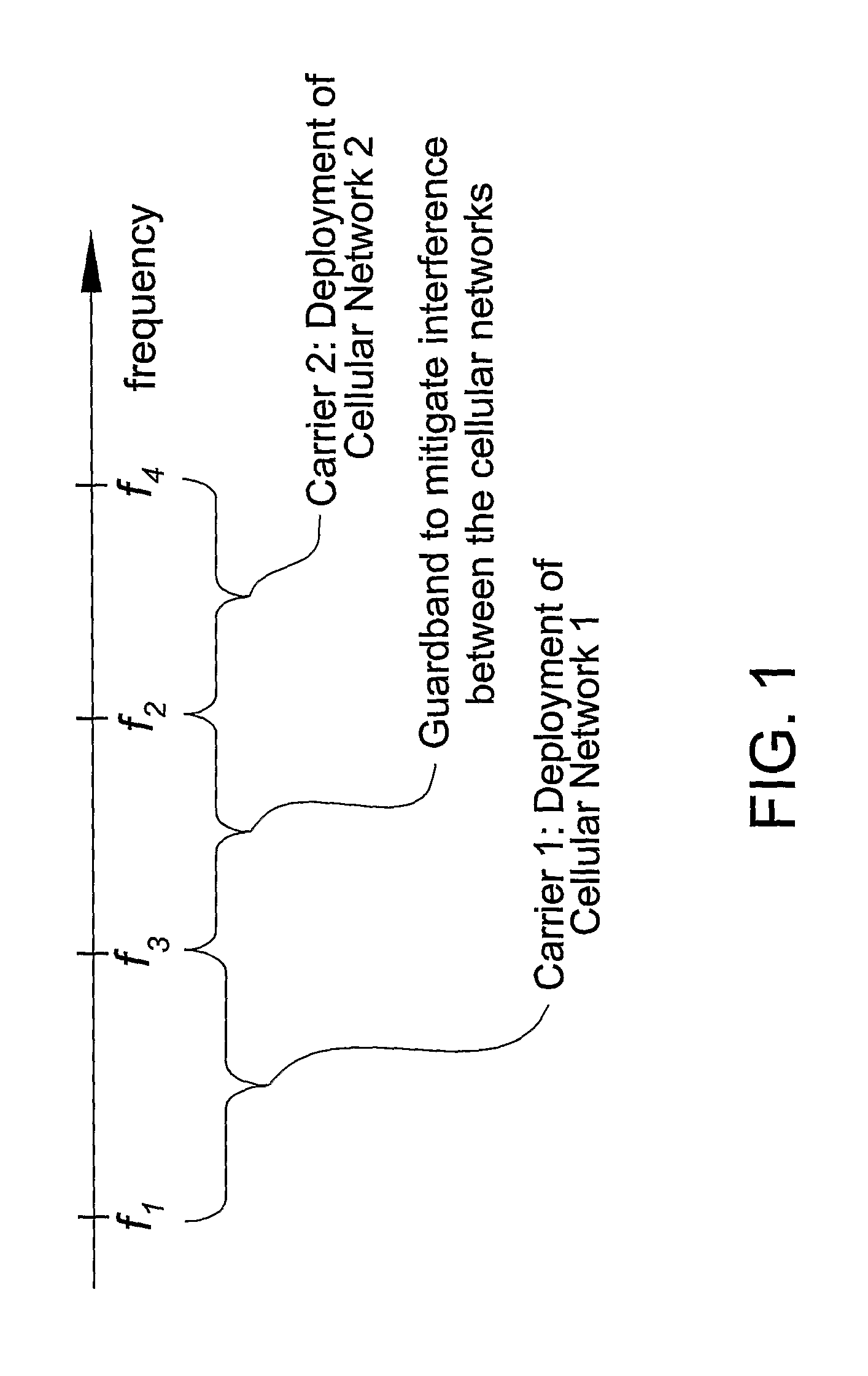Method and Radio Base Station for Effective Spectrum Utilization
a radio base station and spectrum utilization technology, applied in the field of cell radio communication, can solve problems such as degrade system performan
- Summary
- Abstract
- Description
- Claims
- Application Information
AI Technical Summary
Benefits of technology
Problems solved by technology
Method used
Image
Examples
first embodiment
[0039]In a first embodiment two cellular radio networks covering geographical areas that overlap share a frequency zone in the spectrum. The invention will be described in the context of an LTE system partially sharing spectrum with a GSM. FIG. 4, is view over the first cell C1, belonging to the LTE system and served by an LTE RBS (Radio Base Station), B1. The cell C1 is using an LTE carrier defined to be 5 MHz. There is also a second cell C2, served by a second RBS, B2, that belongs to the GSM network and whose geographical coverage, in the example, partly overlaps with the first cell C1. FIG. 6 discloses a frequency axis, wherein the spectrum is divided into 3 separate frequency zones FZ1, FZ2, FZ3:[0040]Frequency Zone 1, FZ1 can only be used by the GSM carriers allocated at those frequencies. They are outside the 5 MHz carrier of LTE.[0041]Frequency Zone 2, FZ2 can be used by both the LTE carrier and the GSM carriers at those frequencies. In order to avoid collisions, the usage o...
second embodiment
[0077]In a second embodiment, the LTE base station B1 receives information from the GSM system, on what parts of the second zone, FZ2, that is occupied by GSM. FIG. 13, is almost the same as FIG. 5, with the addition of a BSC, in the GSM system with a link 21, the LTE base station. The GSM BSC reserves parts of frequency zone 2, for the GSM and informs of this to the LTE base station B1. The Control Channel manager of the LTE base station, B1, is informed of this and only frequencies in zone 2, outside what is reserved by the GSM are scheduled.
[0078]Hierarchical Cell Structure
[0079]The L1 / L2 control channel structure as disclosed in FIGS. 7 and 8, is advantageous to use also in a hierarchical cell structure when cell in different layers of the hierarchical structure shares the same frequency band for long period. FIG. 9 discloses such a hierarchical cell structure with a outdoor macro-RBS, 41 covering an wide outdoor cell. Within the cell an apartment building has a small home base ...
PUM
 Login to View More
Login to View More Abstract
Description
Claims
Application Information
 Login to View More
Login to View More - R&D
- Intellectual Property
- Life Sciences
- Materials
- Tech Scout
- Unparalleled Data Quality
- Higher Quality Content
- 60% Fewer Hallucinations
Browse by: Latest US Patents, China's latest patents, Technical Efficacy Thesaurus, Application Domain, Technology Topic, Popular Technical Reports.
© 2025 PatSnap. All rights reserved.Legal|Privacy policy|Modern Slavery Act Transparency Statement|Sitemap|About US| Contact US: help@patsnap.com



